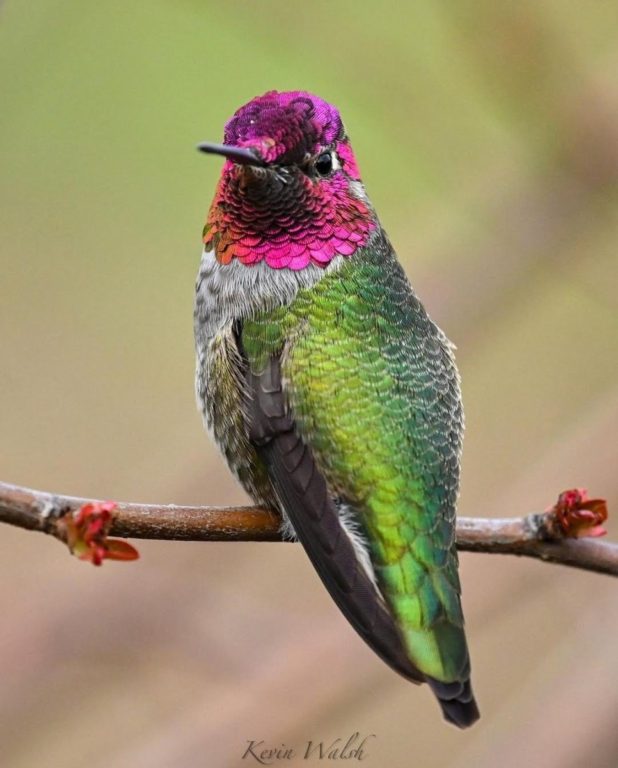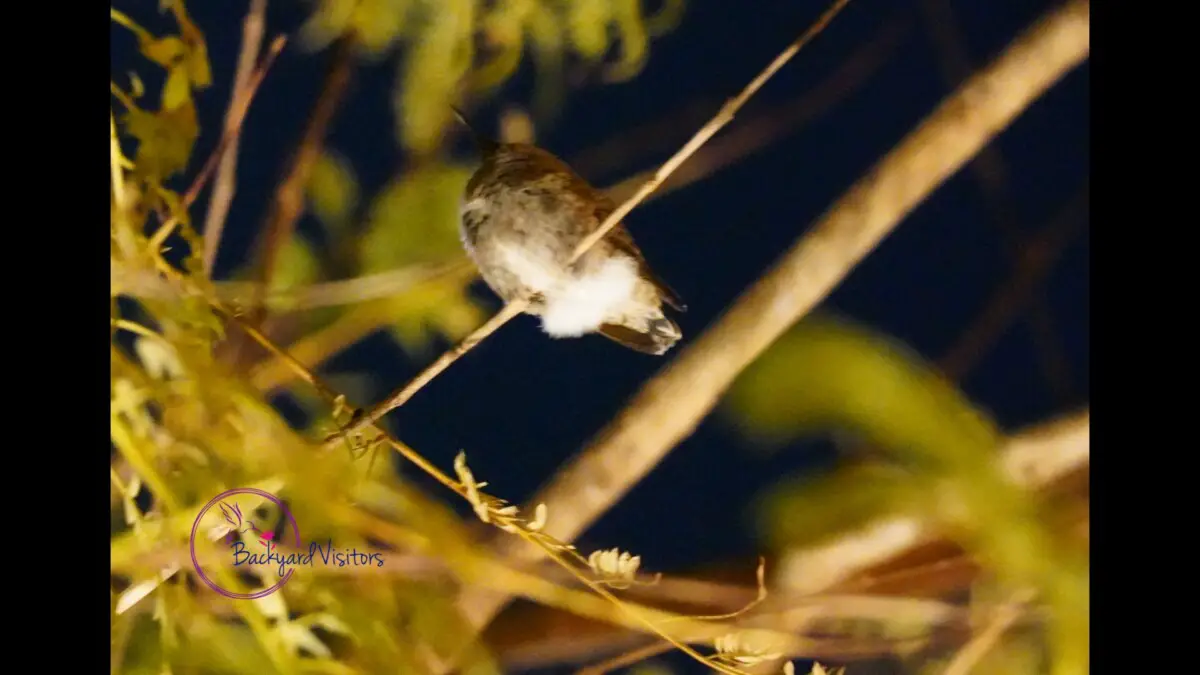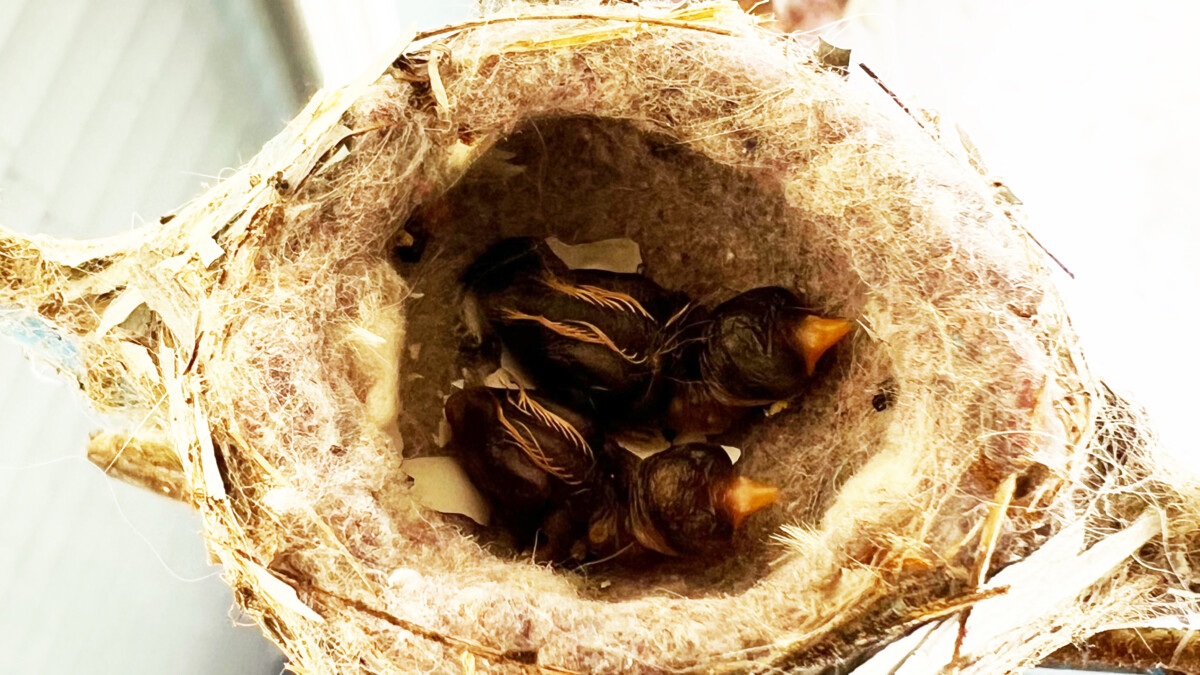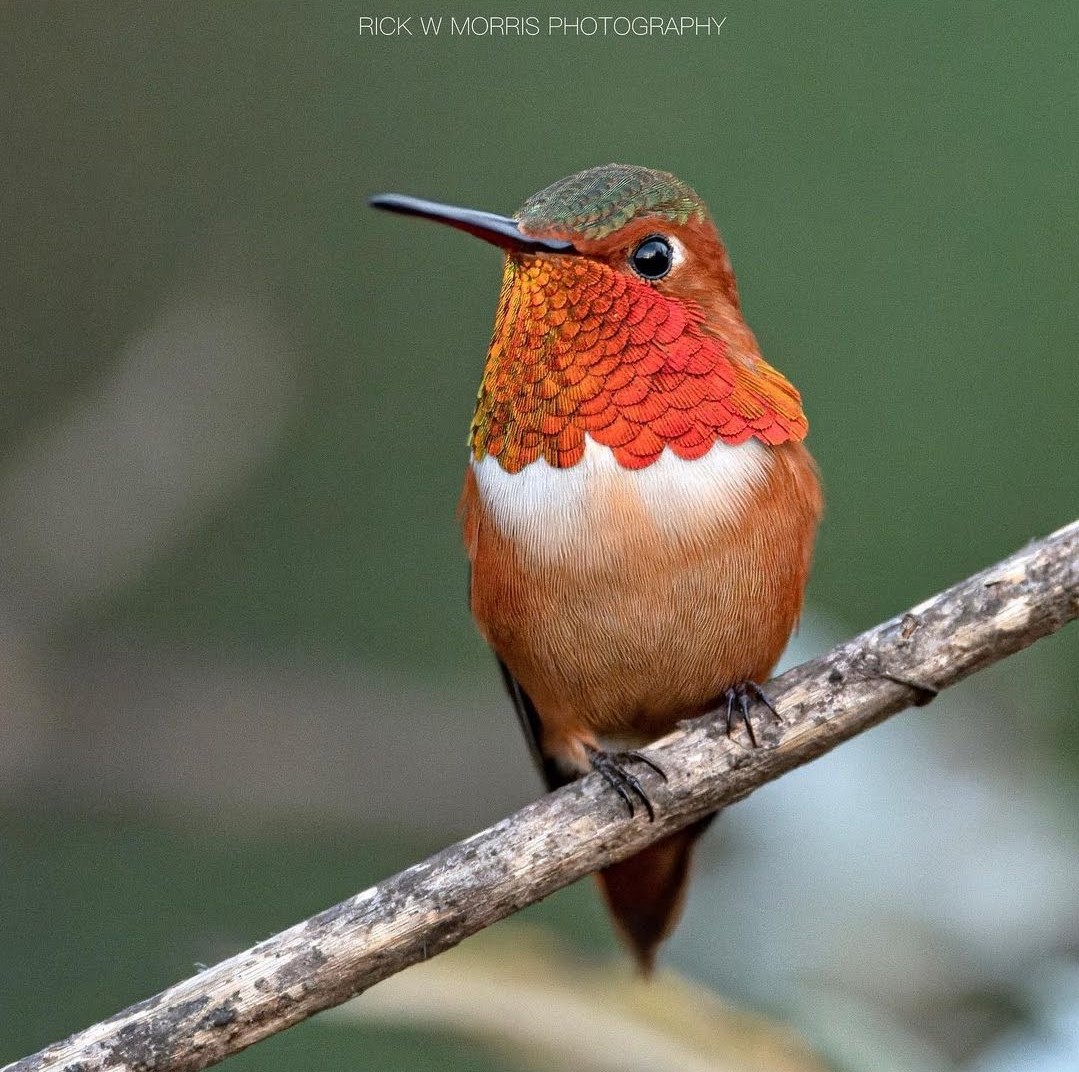This post contains affiliate links.
The hummingbirds visiting my feeders in my backyard have gorgets that range from a variety of vibrant colors to dull, not-brilliant colors.
I started wondering about why hummingbird gorgets differ so much and what the reason was for these differences.
This post describes what I discovered regarding my questions about hummingbird gorgets.
What Is a Gorget on a Hummingbird?
A hummingbird’s gorget refers to the patch of specific feathers located on its throat and chest, resembling the metal mesh throat covering on a knight’s suit of armor. Adult male gorgets display iridescent colors that change with movement, catching and reflecting light. Female gorgets have little to no iridescence.
The term “gorget” (pronounced GOR-jit) comes from the historical days of knights and armor. During combat in the Medieval Ages, a knight’s throat was shielded with a protective collar constructed of metal called a gorget.
All hummingbirds have a gorget but the adult male is the only hummingbird that has a display of brilliant colors.
Unlike the Knight’s metal gorget, the adult male hummingbird’s gorget is composed of small feathers with melanin-containing melanosomes; areas of air pockets within the feather; that reflect sunlight and produce the brilliant irradiance for each specific species.
The stunning sparkle on an adult male hummingbird’s throat is not from pigmentation but rather from iridescence, a natural shimmer that happens when sunlight enters the melanosomes of the gorget feathers and then reflects back out of the melanosomes at varying angles. This interference results in the perception of shifting, vibrant colors.
In the presence of sunlight, a stationary adult male hummingbird projects a dazzling display from his throat that is species-specific. Yet, when he slightly moves his head the intense iridescent glow vanishes and the throat looks dark and almost colorless.
During courtship, to draw in females and assert their authority over male rivals, adult male hummingbirds use nature’s iridescence to show off their large dazzling gorgets.
An example of this is the adult male Anna’s hummingbird who takes advantage of the sun’s rays during his courtship dives to show off his crimson glimmering gorget. As it dives through the air almost straight down, and then levels off, the sun catches those special feathers just right, making them glow with a flash of breathtaking brilliance.
For more information on hummingbird mating, see my article: Hummingbird Parents: (Mating to Nesting)

Photo by: Kevin Walsh
The next time you catch sight of a hummingbird’s radiant throat, you will know what you are seeing is their incredible iridescent gorget in action, a true masterpiece of nature’s creativity!
Do Female Hummingbirds Have Gorgets?
Adult female hummingbirds do have gorgets, but unlike the males, these feathers are not usually iridescent. Instead, their throats are dull white, buff, or light rust with some gray-brown stippling. Depending on the species and lighting there may be a small area of iridescent throat feathers.
Adult female hummingbirds have gorgets, even though they are less visible than the males.
There is an exception. Female Jacobin hummingbirds have a gorget that looks almost identical to the vibrant colors in the male gorget.
This can be very confusing visually and may lead people to believe a male hummingbird is sitting on a nest. (As seen in the video below at 0:30).
In hummingbirds, the gorget refers to the patch of feathers on the throat that is more prominently seen in males. The adult females sport a dull subdued white, buff, or very light rust-colored throat occasionally embellished with light gray-brown speckles and in some species, a modest display of iridescence may be seen.
In certain lighting, the adult female hummingbird gorget or throat feathers can show a glimmer of color resembling male juvenile hummingbirds and can sometimes be easily misidentified out in the field.
For more information on baby hummingbirds, see my article: Baby Hummingbirds: (Egg to Fledgling).
The adult female hummingbird gorget is smaller in size than the males. It covers the throat and part of the chest. These gorgets may also show patterns of spots or lines.
Female hummingbirds, as they mature, can show small areas of subtle iridescence or light coloration in the throat area lacking the intense colors of the male gorget. The adult female hummingbird gorget iridescent colors can range from pale greens and blues to more subdued shades of red, pink, or orange.
Since the female hummingbird is the one who lays the eggs and cares for the babies until they are independent, they must have markings that will camouflage and keep them safe.
This dichotomy in appearance between the adult male and adult female gorget is predominantly an evolutionary adaptation intended to facilitate successful courtship and raising offspring.
It’s important to note that hummingbird species vary in their appearances, therefore the presence and extent of gorgets differs between species.
What Is The Purpose Of a Hummingbird Gorget?
The main purpose of an adult male hummingbird gorget is for mating. For the female, it is to camouflage her in the nest and protect her babies. Hummingbird gorgets serve other purposes such as territorial displays, species identification, communication, recognizing the sexes, and identifying a juvenile vs an adult.
Hummingbirds are remarkable and one of their most interesting features is what is known as a “gorget”. This is the patch of feathers located on the bird’s throat or upper chest resembling the metal mesh covering the throat of a knight’s suit of armor.
A gorget has a variety of functions regarding hummingbird biology and behavior. Below are the top 6 purposes of a hummingbird gorget.
Finding Mates:
The gorget makes up the male hummingbird’s throat and chest. It consists of small specialized feathers capable of producing iridescence when the sun strikes it at the correct angle.
The male hummingbird has the ability to manipulate these feathers to show iridescence at will.
During mating displays, this bright exhibit of colors is utilized to draw the attention of females. The vivid colors of the gorget change as the bird moves, producing a stunning visual spectacle that aids in attracting possible mates.
Territorial Displays:
Male hummingbirds also use their gorgets for territorial displays. They use their bright colors and flashy plumage to establish dominance as they defend their territory from other males. These performances also include aerial maneuvers, quick flights, and aggressive postures.
Species Identification:
The size, shape, and coloring of hummingbirds are incredibly diverse. The gorget aids in the recognition of members of one’s own specific group for both males and females, contributing to the identification and distinction of individual species. The gorget of each hummingbird variety differs in terms of patterns and hues.
Hummingbird communication:
Hummingbirds communicate with one another by using gorgets. Depending on the angle of the sunlight and the bird’s motions, the gorget’s iridescence can alter, sending different signals to other hummingbirds. These variations communicate details about the bird’s attitude, goals, or situation.
A bully hummingbird uses chitters and gorget-flashing to communicate dominance over a feeder and to ward off other competing hummingbirds.
Recognizing the sexes:
Identifying the male vs the female hummingbird is critical in mating. The male hummingbird is endowed with a vibrant gorget to attract the female and also to catch the attention of competing males to warn them to disengage and to drive them away from a potential female mate.
On the other hand, the female gorget is subdued to camouflage her presence and to protect her from possible predators while she is nesting.
Identifying a juvenile vs an adult:
The gorget of both male and female juvenile hummingbirds resemble the adult female hummingbird for their safety from predators as it minimizes visibility and confrontation during their early interactions. They do not want to bring attention to their existence until they are strong enough to fly away from danger or fight against predators.
There is a gray area where it is difficult to identify the difference between an adult female vs a juvenile male hummingbird since the male juvenile is in the process of formulating the vibrant colors of his gorget as he matures. This in-between stage helps to protect the male juvenile providing him time to mature and minimizing the possibility of being consumed by a predator.
A baby hummingbird’s gorget is not the best way to identify a juvenile. The best way to identify a juvenile is the presence of white fluffy down-like feathers around their bottoms.

The hummingbird gorget serves as a multifunctional adaptation that plays a key role in attracting mates, territorial displays, species identification, communication, recognizing sexes, and identifying a juvenile vs an adult.
The iridescence and vivid colors make the gorget a striking and integral feature of these remarkable birds.
Do Baby Hummingbirds Have Gorgets?
Baby hummingbirds do have a gorget but not in the first few days of life. In the early hatchling phase, they have down but no gorget feathers. Molting in the nest, immature gorget feathers replace the down and continue to mature over several molting cycles until they achieve a full-fledged adult gorget.
Baby hummingbirds is a common phrase that does not differentiate between hatchlings and fledglings.
Baby hummingbirds are born initially with no gorget feathers at birth. Both male and female baby hummingbirds lack the striking gorget feathers that mature adults possess. They produce downy feathers that provide insulation to keep them warm.
For more information on baby hummingbirds, see my article: Baby Hummingbirds: (Egg to Fledgling).
As they molt for the first time in the nest, the down like feathers are replaced with immature gorget feathers which will transition over several moltings to the full fledged adult gorget which may take a year or more.

Gorgets are specialized feathers that embody the neck and chest of a hummingbird. In the adult males, these gorgets are dazzling, iridescent throat feathers. These feathers reflect light, creating a vibrant and mesmerizing display of colors as the birds move. The gorget plays a crucial role in attracting mates and establishing dominance among male hummingbirds. In the adult female, the gorget is subdued.
During this transformation, gender differences emerge where the gorget feathers which provide the vibrant coloration begin to develop in male hummingbirds. However, it takes time for these feathers to achieve the full, dazzling iridescence that we associate with adult male hummingbirds.
As baby hummingbirds mature and gender is revealed, male hummingbirds gradually acquire eye-catching, vibrant throat feathers as they go through molting stages.
The attention getting displays of the gorgets are essential for luring mates and establishing male dominance. Female hummingbirds are less vibrant and blend into their surroundings, however they can show some color near their throats looking similar to juvenile hummingbirds.
I hope this article adds to your enjoyment of hummingbird watching.
Check out my other posts on Hummingbird Questions
Happy Hummingbird Watching!
Backyard Visitors participates in affiliate programs which compensate us for referring traffic.


